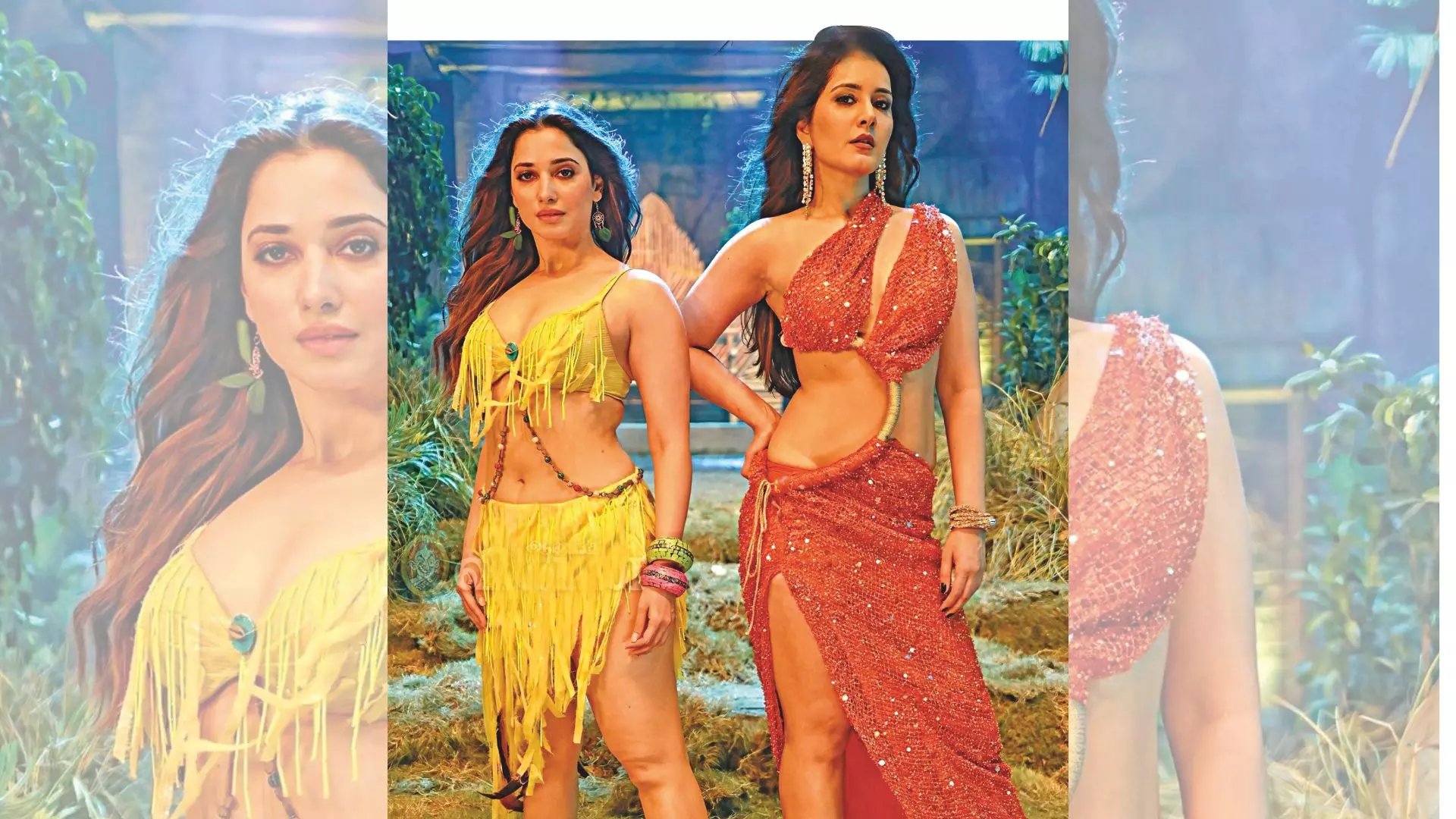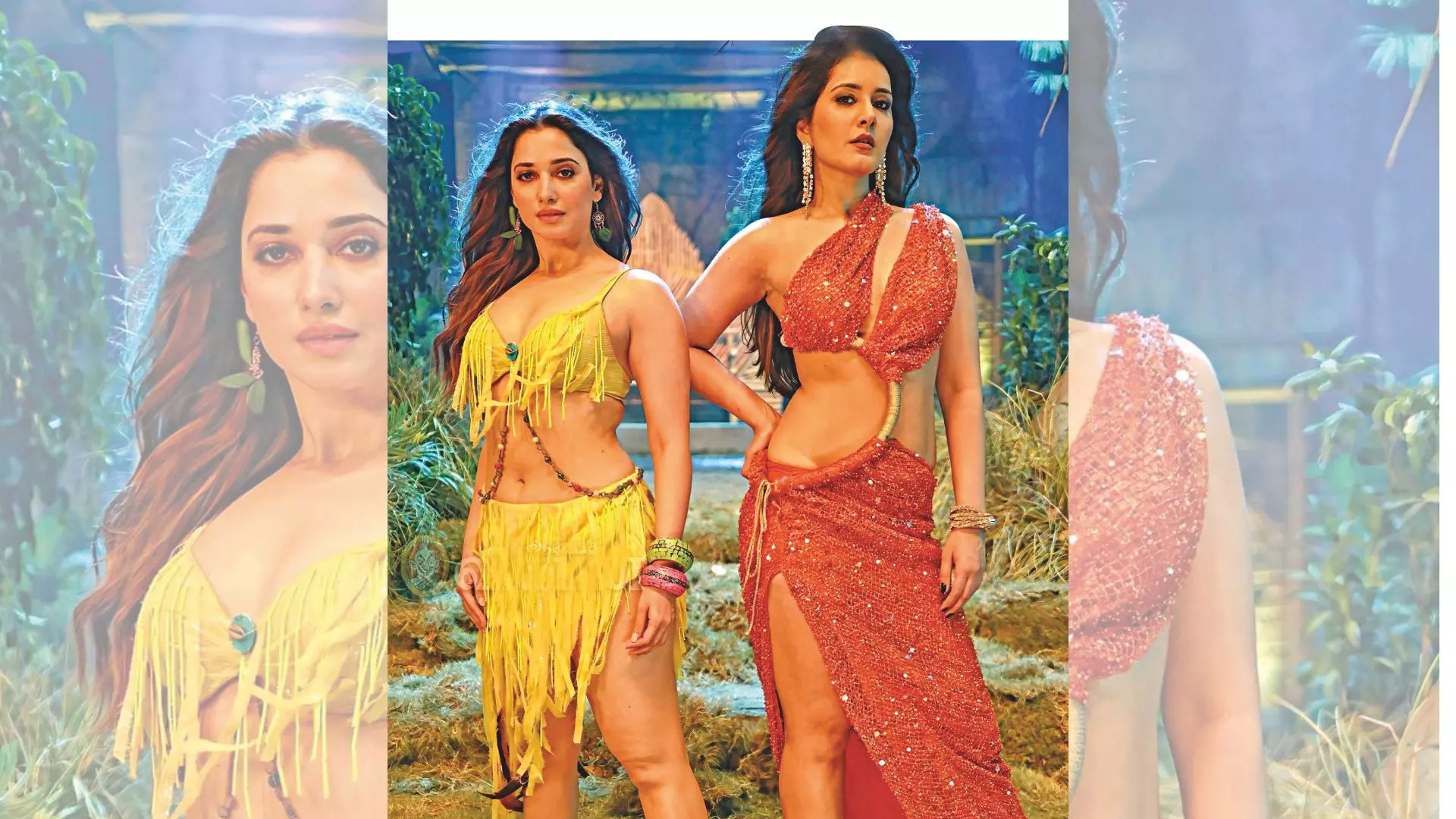
The ‘item songs’ in Indian movies brim with raw energy, glamour, and a touch of controversy. These peppy numbers are peppered with raunchy lyrics, infectious rhythms and eye-catching choreography. For many years, these dance numbers ignominiously labelled as ‘item songs’ objectified women and perpetuated a very narrow standard of beauty. The ideal female body, as portrayed in these songs, was often a size-zero figure, with flawless curves and an airbrushed appearance. However, in recent years, Bollywood has begun to move away from the rigid and unrealistic portrayal of female bodies.
The film industry is abuzz with some truly captivating performances that are redefining the music scene. Raashi Khanna and Tamannaah Bhatia’s electrifying energy in Panchuko left the viewers spellbound. Nora Fatehi stole the spotlight and became a viral sensation with her dance in Manike. Aditi Rao Hydari’s facial expressions and drama in Saiyaan Hato Jaao melted a million hearts! While Tamannaah Bhatia dazzled in Aaj Ki Raat and Kavalaya. Her vibrant choreography and powerful stage presence further emphasized the celebration of diverse body types.
What’s truly inspiring about these performances is how these women challenge conventional beauty standards. Sreeleela rocked in Kurchi Madatha-petti, where she masterfully blends traditional elements with modern dance. Sayyeshaa lit up the screen in Raawadi with her charm and elegance.
Puja Banerjee added an air of sophistication to Salma, with her grace and fluid dance moves. These actresses, who are not typical size-zero figures, embraced their bodies with confidence and grace, promoting body positivity through their performances. They show women with natural, fuller figures, moving beyond the ‘Size-0’ figure fixation.
Body+ve Movement
This shift is significant, and its impact on the body positivity movement is profound. For decades, the portrayal of women in Bollywood has influenced how women perceive themselves and their bodies. The dominance of the size-zero aesthetic in cinema made it difficult for women with different body types to see themselves as beautiful. The underlying message was clear: to be desirable, one had to fit a certain mould. But the recent changes in item songs are challenging this narrative, offering a more inclusive and empowering vision of beauty.
“Finally, we’re seeing women who look like real people, not just airbrushed fantasies,” says Richelle Fernandes, a Mumbai-based BMS student.
Komal Nahta, a film trade analyst, adds, “If the film is a flop — the portrayal of women can’t ever affect the flop or hit of the film. The public mindset has changed, and now body shaming has reduced a lot. Filmmakers have realized you don’t need a slim, trim, pretty-looking woman.”
Bollywood, item songs, body positivity, diverse body types, Raashi Khanna, Tamannaah Bhatia, Nora Fatehi, Aditi Rao Hydari, Sreeleela, Sayyeshaa, Puja Banerjee, beauty standards, size-zero, Indian cinema, body shaming, Bollywood evolution, inclusivity, cultural shift, representation in media, women’s empowerment, self-expression, authentic beauty, film industryRedefine Beauty
The emergence of body positivity in Bollywood is not just a superficial change; it represents a broader cultural movement that is redefining beauty standards across
Real Curve Call
Furthermore, the celebration of diverse body types in item songs is a step towards dismantling the harmful stereotypes that have plagued Indian cinema for so long. Traditionally, item songs have often been criticized for their objectification of women, reducing them to mere eye candy. However, the new wave of item songs is turning this on its head by focusing on the strength, confidence, and individuality of the women featured in them. This shift is helping to challenge the notion that a woman’s worth is determined by her physical appearance and instead emphasizes the importance of self-expression and authenticity.
Nahta feels Bollywood is evolving. “It is a reflection of what is happening in society. Men accepting female-shaped bodies gives more courage to film producers to find women who don’t fit zero figures,” he says.
The cultural impact of these changes extends beyond the film industry. Bollywood has always had a profound influence on Indian society, and the way women are portrayed in films can have a lasting effect on how women are perceived in real life. By embracing body positivity and showcasing diverse body types, Bollywood is helping to shift societal attitudes towards beauty and self-worth. This, in turn, can have a positive impact on the mental health and well-being of women across the country.
It’s important to recognize that this shift towards body positivity in item songs is part of a larger movement within the entertainment industry.
Across the world, there is a growing recognition of the need for more inclusive representation in the media. From
Beauty Unscripted
While item songs are starting to embrace body positivity, other areas of Indian cinema still lag. For instance, leading roles in mainstream films are often still reserved for actresses who fit the traditional mould of beauty, and there is a need for more diverse casting in all areas of the industry. The impact of these changes will depend on how they are received by audiences.
For the body positivity movement to truly take hold in
Bollywood’s shift towards body positivity in item songs is more than a passing trend — it’s a game-changer. By celebrating diverse body types and ditching the zero-figure ideal, these songs are rewriting the rules of beauty. Though there’s still a journey ahead, this movement marks a refreshing change: true beauty isn’t about conforming to a mould but about embracing your unique self. Next time you watch a film or shake a leg on some item song, remember that beauty isn’t about flawless perfection but about authentic self-expression.
